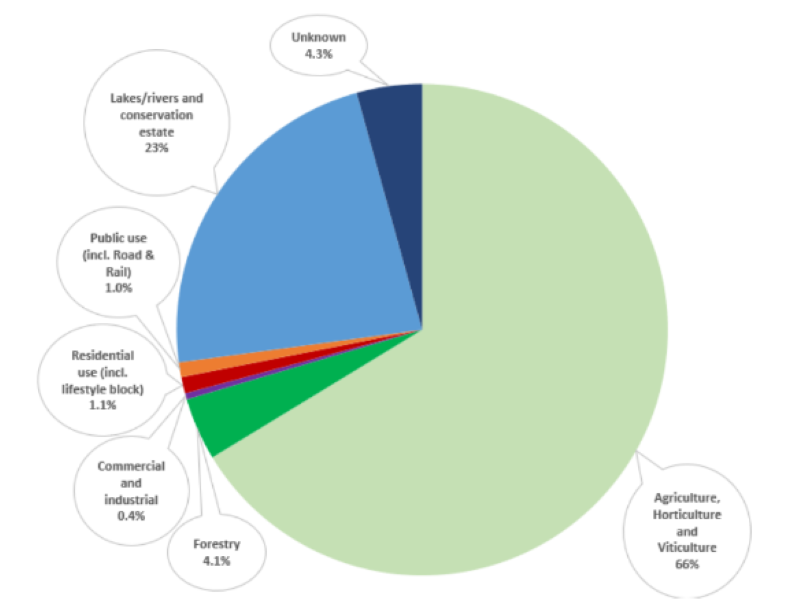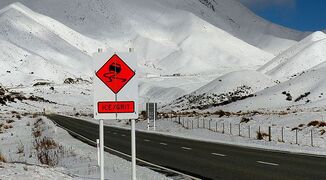New Otago economic reports a first – ORC
Staff Reporter
14 August 2023, 2:17 AM
 PHOTO: Pixabay/Victor Ronald MacGill
PHOTO: Pixabay/Victor Ronald MacGillTwo new economic reports released by the Otago Regional Council this week shed light on the importance of natural resources to Otago’s economy and the diversity of its primary sector.
Both are watershed reports, providing new understanding not just for the proposed Land and Water Regional Plan, but also for policy and project development throughout Otago,
says council senior economist Dr Ann Yang.
“Together these reports represent a considerable investment in understanding rural businesses in relation to freshwater management by all parties involved,” Dr Yang said.
The reports were presented at the Environmental Science and Policy Committee workshop earlier this month.
The first report, Otago’s Rural Businesses and Environmental Actions for Freshwater, tests the impacts of possible environmental actions for six primary industries.
Farm case studies were developed for sheep and beef farms (16 farms), arable (4), deer (5), dairying (10) and representative models for horticulture (5) and viticulture (3).
Specific chapters in the first report focus on each rural industry and were written via an Industry Advisory Group, with support from the council.
The second report is the Otago Region Economic Profile for Land and Water that highlights the land and water used by the primary sector, which covers about 70% of the land area in the region.
In both reports, industry data was compiled and used.
The second report paints a picture of a “highly connected” Otago economy both within and between sectors, with important links identified between growing and food processing industries plus the strong economic connections with neighbouring regions, Dr Yang said.
“The importance of identifying these links helps with understanding the possible flow-on impacts on the environment so they may be managed,”
The report also highlights that rural land production and tourism strongly underpin the structure of the Otago economy.
These are activities in which Otago exhibits comparative strengths and concentrations, when compared to elsewhere in New Zealand, she said.
Those two activities also provide most of Otago’s export earnings, respectively 19% tourism and 48% rural land production - 67% in total.
Primary production equals about 70% of Otago’s total land use.

Just over 2 million hectares of land, or two thirds of the total land area, is used for agricultural production. GRAPHIC: Supplied
The establishment of the Industry Advisory Group for the economics created an opportunity to engage with the regional council and provide important information about all the primary industries in the region.
Dr Yang said the participating industry groups - Beef + Lamb New Zealand, Deer Industry New Zealand, Foundation for Arable Research, DairyNZ, Horticulture New Zealand, and Central Otago Winegrowers Association -commended the council for the report initiative.
They noted this was only the second time such a detailed and comprehensive analysis of a regional primary sector has been undertaken in New Zealand, the other being a report for Southland.
“As a result, a deeper understanding of the diversity, complexity and the degree of integration between and within the industries as well as with the wider regional economy and society emerged,” Dr Yang said.
It is also an opportunity to think through the economic impact of potential regulations, which are important considerations for the decision makers as the proposed Land and Water Regional Plan is developed, she said.
The Central Otago Winegrowers Association thanked the council for the opportunity to participate in the development of the Farmer/Grower reports.
“Providing detailed winegrower industry information as part of the ORC consultation process for Land and Freshwater policy and plan development is imperative if we are to have the recognition of the social and economic returns winegrowers in the region contribute,” the association said.
“Our involvement is important to enhance our reputation as an industry and our social license to operate. The wine industry in New Zealand fully supports the ongoing initiatives to ensure our rural land and our water catchments are protected and enhanced, while maintaining the economic viability for our vineyards.”
Legislative requirements and looking to future plans in step with the rest of the country, the council is required to implement a range of national legislation, including the National Policy Statement for Freshwater Management 2020, the National Environmental Standards for Freshwater and other regulations including Stock Exclusion Regulations and Water Metering Regulations, as well as developing a framework to implement Freshwater Farm Plans.
For Otago, all these legislative requirements are being included within the development of the regional council’s proposed Land and Water Regional Plan(LWRP), which manages activities relevant to rural and urban communities.
ORC will notify its LWRP by June next year, which will ultimately replace the now-outdated Regional Plan Water: for Otago; operative since 2004, and Regional Plan: Waste.
The two latest reports are the third and fourth of five within the ORC’s Economic Work Programme, which is part of the overall LWRP project.




